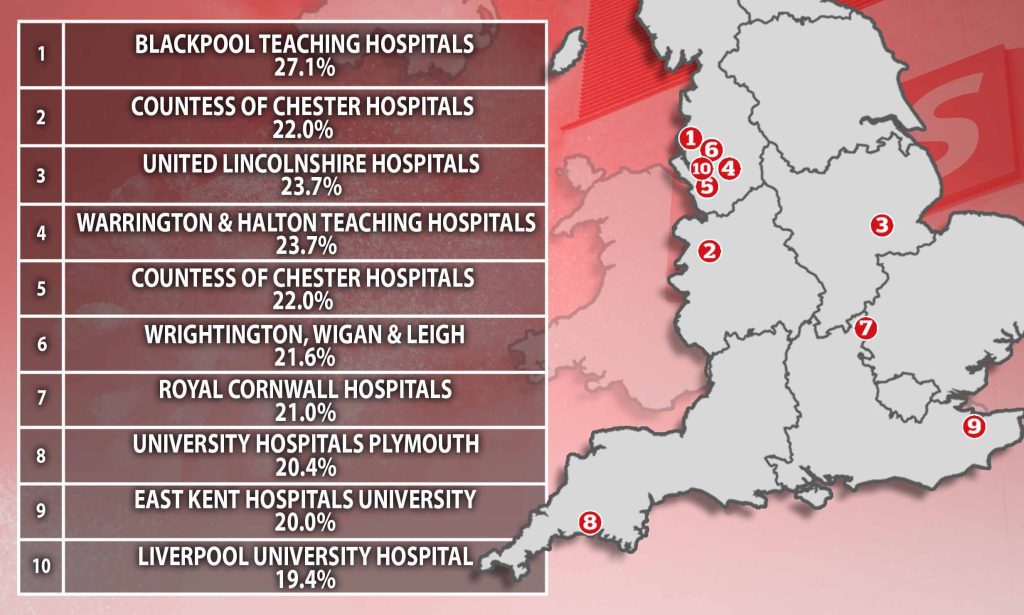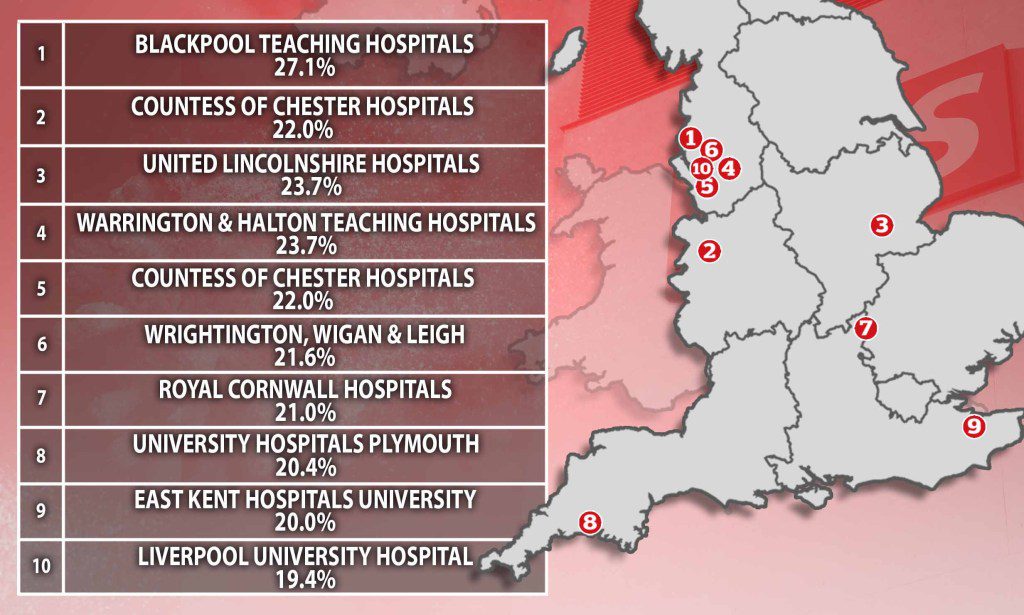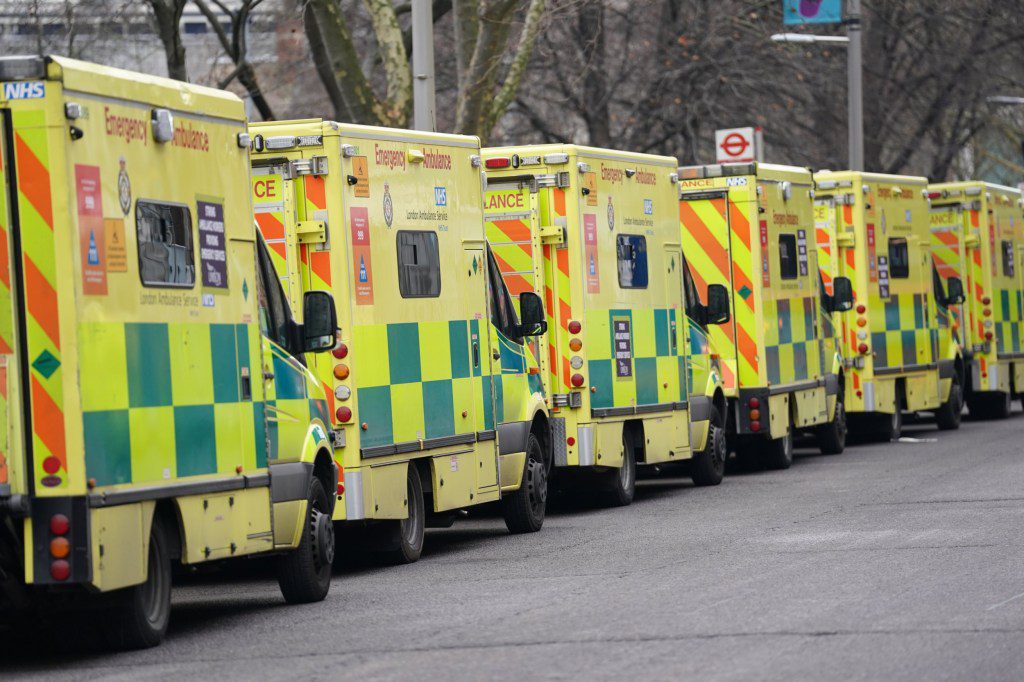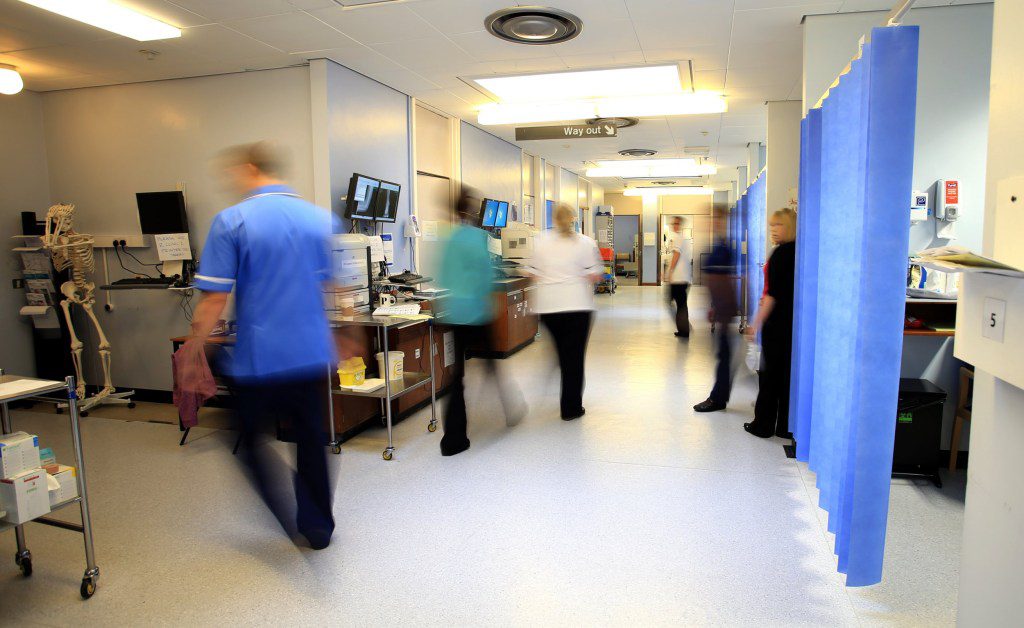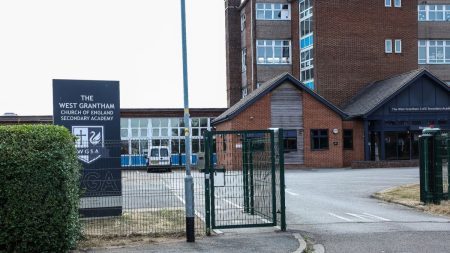Alarming A & E waiting times mean that 25% of patients have been left waiting for up to 12 hours for emergency care in England’s busiest hospitals.
In February, 11.3% (150,000) of patients across the county spent at least half a day in emergency units.
Nine NHS trusts in Cornwall, Lancashire and Kent saw over 20% of patients face these severe delays.
This comes after a shocking study released earlier today revealed that nearly 14,000 people died unnecessarily in England last year due to ‘excessively long’ A&E waits of up to 12 hours.
Unions say that NHS hospitals have become ‘fatally unsafe’ due to a lack of beds and staff.
‘Waiting time’ means how long it takes after arriving in A&E to be admitted to hospital, transferred to another healthcare provider or discharged.
The NHS aims to admit, transfer, and discharge 95% of patients attending A&E within four hours, according to the Handbook to the NHS Constitution.
However, research by the emergency physician association found that only 70.9% of patients were seen within this time frame.
Blackpool Teaching Hospitals NHS Foundation Trust was identified as the worst for waiting times, with NHS England figures for February showing that 27.1% of patients waited at least 12 hours from arrival to be seen.
The Shrewsbury and Telford Hospital NHS Trust (25.1%), United Lincolnshire Hospitals NHS Trust, and Warrington and Halton Teaching Hospitals NHS Foundation Trust (both 23.7%) also raised alarms with their high wait times, with around a quarter of patients waiting for half a day.
In the last year alone, figures show 440,000 A&E patients in England spent 12 hours waiting for treatment.
Royal College of Emergency Medicine president Dr Adrian Boyle said ‘urgent intervention’ is needed to solve the crisis.
Insiders worry the situation will only worsen in winter months, with bed-blocking – where patients who are fit to leave hospital can’t as there is no capacity in the social care sector – funding, lack of investment, declining working conditions for staff, an ageing population and strikes all sourced as the reasons behind the growing problems.
Dr Boyle continued: ‘Excessively long waits continue to put patients at risk of serious harm.
‘Lack of hospital capacity means patients are staying in A&E longer than necessary and continue to be cared for by emergency department staff, often in clinically inappropriate areas such as corridors or ambulances.
‘The direct correlation between delays and mortality rates is clear. Patients are being subjected to avoidable harm.
‘Urgent intervention is needed to put people first. Patients and staff should not bear the consequences of insufficient funding and under-resourcing. We cannot continue to face inequalities in care, avoidable delays and death.'
The medical expert, when questioned about the numbers today, stated that currently, being hospitalized may worsen rather than improve people's conditions.
.





